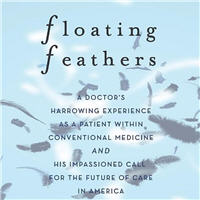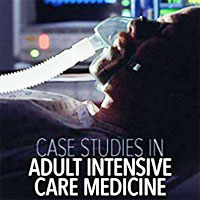Tag: surgery
Carotid Blowout Syndrome: Modern Trends in Management
Carotid blowout syndrome (CBS) refers to rupture of the carotid artery and is an uncommon complication of head and neck cancer that can be rapidly fatal without prompt diagnosis and intervention. CBS develops when a damaged... read more
Floating Feathers: A Doctor’s Harrowing Experience as a Patient Within Conventional Medicine and an Impassioned Call for the Future of Care in America
Dr. Ross I.S. Zbar spent his career as a plastic surgeon, in the US as well as abroad in developing countries, mending disease- and trauma-related deformities--and he was never hesitant to make his voice heard as an advocate... read more

Transcatheter arterial embolization for severe blunt liver injury in hemodynamically unstable patients
Transcatheter arterial embolization (TAE) in hemodynamically unstable patients who responded to initial infusion therapy to some extent has acceptable in-hospital mortality and clinical failure rates. Hemodynamic instability... read more
Sedation with Midazolam After Cardiac Surgery in Children with and without Down Syndrome
The majority of children with and without Down syndrome required additional sedation after cardiac surgery. This pharmacokinetic and pharmacodynamic analysis does not provide evidence for different dosing of midazolam in... read more
Trauma: My Life as an Emergency Surgeon
TRAUMA is Dr. Cole's harrowing account of his life spent in the ER and on the battlegrounds, fighting to save lives. In addition to his gripping stories of treating victims of gunshot wounds, stabbings, attempted suicides,... read more

Operative Techniques and Recent Advances in Acute Care and Emergency Surgery
The aim of this book is to identify and shed new light on the main surgical practices involved in acute care and trauma surgery. Adopting an evidence-based approach, a multidisciplinary team of surgeons and intensivists... read more

Operative Lung Deflation During OLV with a DL-ETT
Operative lung deflation during lung deflation during one-lung ventilation (OLV) with a double-lumen endotracheal tube (DL-ETT) is faster when the operative lumen remains closed before pleural opening thus preventing it from... read more
Practice Recommendations on Neuraxial Anesthesia and Peripheral Nerve Blocks during the COVID-19 Pandemic
General anesthesia (GA) with airway intervention leads to aerosol generation, which exposes the health care team to risk of transmission of COVID-19 both during intubation and extubation. The odds of transmission of acute... read more
Rapid detection of clinically-relevant plasma direct oral anticoagulant levels following acute traumatic injury
In urgent clinical situations, such as trauma, urgent surgery or before thrombolysis, rapid quantification of direct oral anticoagulant plasma drug levels is warranted. Using the ClotPro® analyser, we assessed two novel... read more
Artificial Intelligence in Telemetry: What Clinicians Should Know
Advances in artificial intelligence are beginning to unlock the potential of telemetry data to directly inform diagnosis and personalized treatment. We can see hints of this in considering the case above. Is a second... read more
Gabapentinoids and the Risk of Opioid-Related Adverse Events in Surgical Patients
In this real-world cohort study of patients who underwent major surgery, concomitant use of gabapentinoids with opioids was associated with increased risk of opioid overdose and other opioid-related adverse events; however,... read more
Modifiable Factors Associated With Chronic Pain After Surgery for Distal Radius Fractures
In this study, preoperative pain, time to surgery, and procedure type were modifiable factors associated with chronic pain 1 year after DRF treated with surgery. Adequate pain control in patients with acute DRFs even... read more
Sick Meningitis, POCUS for Pneumoperitoneum, and Treatment of CHS
Today on the emDocs cast with Brit Long, MD (@long_brit) and Manpreet Singh, MD (@MprizzleER) we cover three posts: the sick meningitis patient, ultrasound for pneumoperitoneum, and treatment of cannabiniod hyperemesis syndrome. Part... read more
The Impacts of Gender Disparity in Residency Matching
A critical turning point for the female physician is highlighted in the study by Lorello et al1 as another one of the numerous inequities throughout the female physician’s career life cycle. Their study’s extensive assessment... read more
Clinical Evaluation of a High-fidelity Upper Arm Cuff to Measure Arterial Blood Pressure during Noncardiac Surgery
The new high-fidelity upper arm cuff method met the current international standards in terms of accuracy and precision. It was also very accurate to track changes in blood pressure and reliably detect severe hypotension during... read more
Cardiothoracic Critical Care
This new bedside manual guides you through all the practical aspects of managing patients following cardiothoracic surgery and critically ill cardiology patients. Primarily designed to use in cardiothoracic intensive care... read more

Using Dynamic Variables to Guide Perioperative Fluid Management
Intravenous fluid administration is an integral part of patient management during anesthesia. This practice has a strong clinical rationale since a decrease in blood volume, either present before or developing during surgery,... read more
Standardized Perioperative Feeding Protocol Improves Outcomes
An aggressive, but safe, perioperative feeding protocol implemented in a homogenous low-risk neonatal cardiac surgical population improves feeding outcomes, including increased weight gain, as well as decreased postoperative... read more
When Death Becomes Life: Notes from a Transplant Surgeon
A gifted surgeon illuminates one of the most profound, awe-inspiring, and deeply affecting achievements of modern day medicine—the movement of organs between bodies—in this exceptional work of death and life that takes... read more

Pulse Wave Analysis to Estimate Cardiac Output
Cardiac output (CO)–guided therapy is a promising approach to hemodynamic management in high-risk patients having major surgery and in critically ill patients with circulatory shock. Pulmonary artery thermodilution remains... read more
Case Studies in Adult Intensive Care Medicine
Guiding FFICM and EDIC exam candidates through the intensive care medicine curriculum, this book provides 48 case studies mapped to eight key areas of study in the UK and European syllabuses. Cases include clinical vignettes,... read more

Angiotensin II in Post Cardiopulmonary Bypass Vasoplegia
Post cardiopulmonary bypass vasoplegia is common, and associated with poor outcomes. Traditional management strategies involving escalating doses of catecholamines, vasopressin and adjuncts such as methylene blue and hydroxycobalamin... read more









